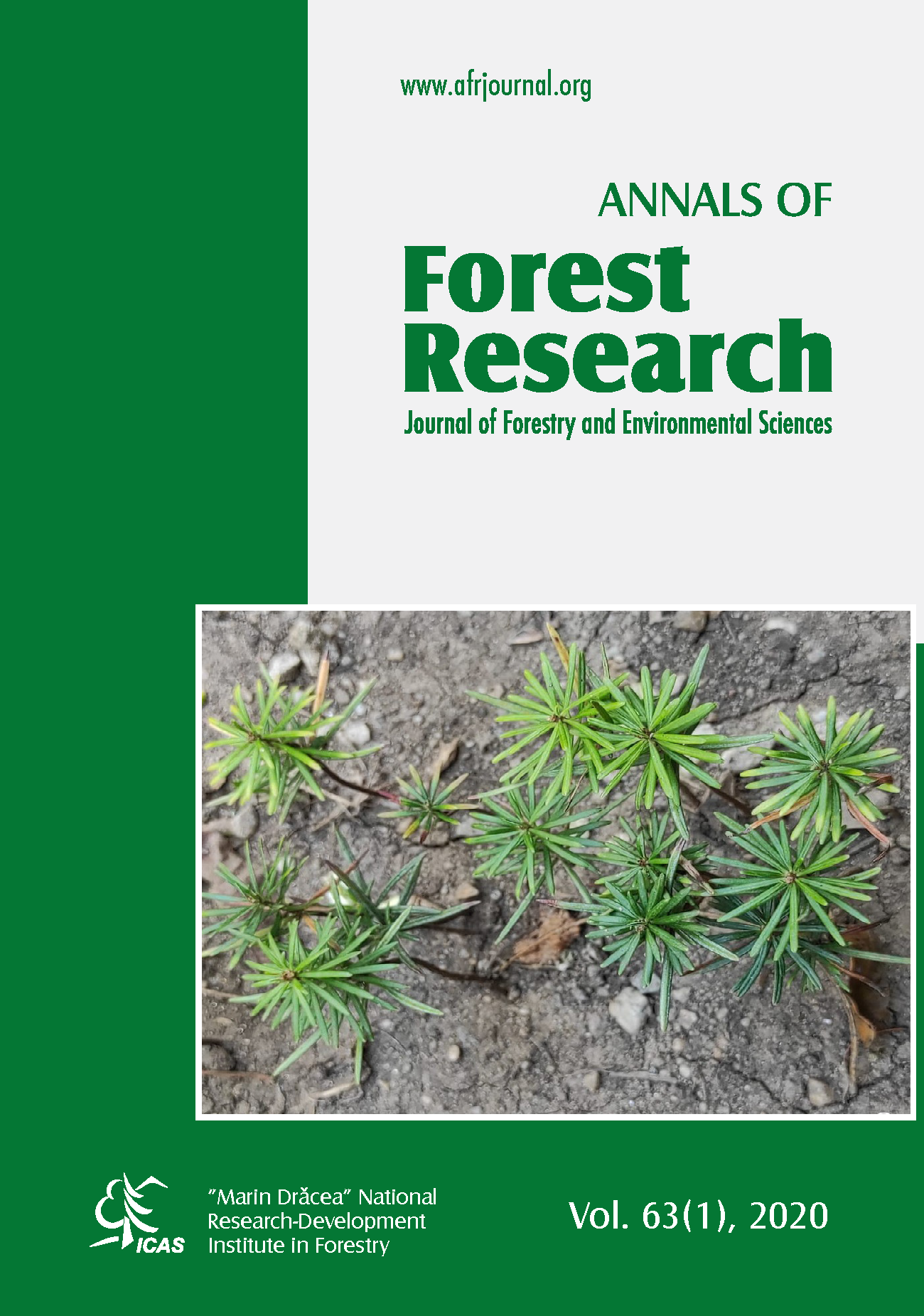Comparison of seed component between stempruned and un-pruned trees in a Pinus koraiensis seed orchard
DOI:
https://doi.org/10.15287/afr.2008.158Keywords:
Pinus koraiensis, stem-pruned, unpruned, seed component, fatty acidsAbstract
A clonal seed orchard of Korean white pine in Chuncheon, Korea, was
established in 1982 and some trees were stempruned at the height of 1m or 2m to increase nut production and provide easy cone collection
in 1996. The stem-pruned trees yielded the highest nut production (mean = 3,200g), which is 1.4 to 2.2 times higher than that (1,870g) of
un-pruned trees in 1999. As there was a large difference in quantity, it was questioned whether there are some differences in quality,
i.e. seed component, because of highlyincreased seed production. Three trees per treatment, selected from the same family, provided
seeds for three years for analysis from 2000 to 2002. The general component analysis followed the methods of AOAC and fatty acids
were investigated by gas liquid chromatography. The results obtained in percentage (%) were changed to angles following the arc sine
transformation and then analyzed. No significant differences were found among the three treatments, that is un-pruned, 1m-stem-pruned
and 2m-stem-pruned treatment, or among years in ash (1.67~2.48%), crude lipid (56.57~72.53%), crude protein (12.75~19.55%), and
carbohydrate (3.77~8.41%). Linoleic acid (18:2) (46.26~55.25%) and oleic acid (18:1) (27.19~32.45%) were the most common components
of the fatty acids. All seeds from each treatment contained two essential fatty acids, i.e., linoleic acid and linolenic acid (18:3)
(12.78~14.21%). Differences among treatments
were detected only in palmitoleic acid (16:1) (0.02~0.08%) and linolenic acid in 2001 and in 8,11,14-eicosatrienoic acid (20:3n9) in
2000. 5,9,12-pinoleic acid [18:3 (γ)] characteristic to Korean white pine seed was found in every seed. It was concluded that stem-pruning
had no influence on general seed component and fatty acid composition.
Downloads
Published
Issue
Section
License
All the papers published in Annals of Forest Research are available under an open access policy (Gratis Gold Open Access Licence), which guaranty the free (of taxes) and unlimited access, for anyone, to entire content of the all published articles. The users are free to "read, copy, distribute, print, search or refers to the full text of these articles", as long they mention the source.
The other materials (texts, images, graphical elements presented on the Website) are protected by copyright.
The journal exerts a permanent quality check, based on an established protocol for publishing the manuscripts. The potential article to be published are evaluated (peer-review) by members of the Editorial Board or other collaborators with competences on the paper topics. The publishing of manuscript is free of charge, all the costs being supported by Forest Research and Management Institute.
More details about Open Access:
Wikipedia: http://en.wikipedia.org/wiki/Open_access






